


МЕТОДИЧЕСКОЕ ПОСОБИЕ ПО АНГЛИЙСКОМУ ЯЗЫКУ
«Вкусные истории»
для специальностей:
19.02.10: «Технология продукции общественного питания»
43.01.09 – «Повар, кондитер»
43.02.15 «Поварское и кондитерское дело»
Мареева Л.В
преподаватель английского языка
высшая квалификационная категория
г. Сыктывкар
2020
Пояснительная записка
Методическое пособие «Вкусные истории» создано с целью ознакомления обучающихся специальностей и профессии :
19.02.10: «Технология продукции общественного питания»
43.02.15 «Поварское и кондитерское дело»
43.01.09 – «Повар, кондитер»
· с культурными традициями предков;
· формирования у обучающихся основ целостной эстетической культуры и толерантности, через познание истории кулинарных изделий и народных традиций;
· формирование у подрастающего поколения бережного отношения к культурному наследию, к истории и традициям стран и народностей.
Особенностью данного пособия является то, что у обучающихся появляется возможность широкого и разнообразного применения своих знаний, которые могут быть полезны как в изучении темы «Кухня разных стран», так и в приготовлении кулинарных изделий на уроках производственного обучения, а также во внеучебной деятельности по дисциплине «Английский язык в профессиональной деятельности».
Пособие состоит из исторической справки появления того или иного продукта или блюда, рецепта приготовления блюда и занимательных заданий.
Stroganoff
Beef Stroganoff is a popular dish made from small pieces of scraped or sliced meat in a sauce, which entered the international restaurant cuisine nomenclature after world war II as a "Russian dish", although it is not one. [cut]For the first time this dish appeared at the end of the XIX century and was named in honor of count Stroganov A. G., known in the scientific world for giving a huge family library to Tomsk University. In addition, according to his project, the Odessa University was founded, originally called Novorossiysk. As a man exceptionally rich and childless, he, according to the custom of the nobles, kept an "open table"in Odessa. This meant that any educated and well-dressed person could come to lunch directly from the "street". It was for these tables that Stroganov, not Stroganov, but one of his chefs, invented a kind of hybrid Russian-French dish. Moreover, the sauce was served not separately, in French, but as a Russian gravy. The dish was conveniently divided into portions and was delicious. It was immediately appreciated by Odessa cookbook authors.
Recipe
For beef Stroganoff, take the usual beef tenderloin or loin of the lumbar part, the meat is slightly beaten off in a piece, and then cut into rectangles 5-6 cm long and 1 cm thick. These rectangles are cut into narrow pieces - strips 1-1. 5 cm thick. Cut the meat necessarily across the fibers, otherwise it will not be seen through. The strips are breaded in flour and fried over high heat in a frying pan, the bottom of which is covered with onion circles, until the meat has a Shine (it should look like varnished). Immediately transfer the meat to a saucepan, pour sour cream and tomato sauce (1 Cup of sour cream, 1 tbsp. flour, 1-2 tablespoons of tomato paste or juice) and simmer for 15-30 minutes over moderate heat. All cooking takes about an hour. The dish is served hot with fried potatoes and fresh tomatoes.
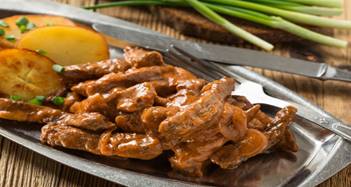
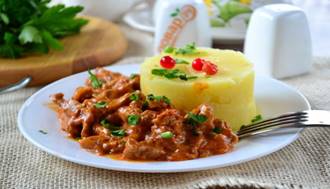
Cabbage rolls.
A very complicated history of the origin of cabbage rolls. They are first mentioned in the Comedy of Aristophanes, which deals with grape leaves with pork. However, in China, there is a legend about how one clumsy sage fell into the river, and his students began to throw lumps of rice in cabbage into the water to distract predatory fish. Another history of the origin of cabbage rolls is associated with pigeons baked on the grill. Over time, they were replaced with beef in a cabbage cocoon — and cabbage rolls appeared.
Recipe
Cabbage head (large) - 1 piece; Minced meat-500 gr. Onion – 1 piece; Carrots – 1 piece; Rice-0.5 cups; Garlic – 2 cloves; Tomatoes – 1 piece; Cooking oil; Salt and pepper; Parsley;
For the sauce: Sour cream-4 tablespoons; Tomato paste-1 tablespoon; Water-500 ml.
Boil the rice until it is half cooked. Peel the carrots and grate them on a coarse grater. Onions are cleaned and finely chopped. Fry the onion and carrot until soft. Finely chop the herbs and garlic. Grate the tomato. Put the minced meat, rice, herbs, garlic, onions and carrots, tomatoes, salt and pepper in a deep bowl. Mix all the ingredients thoroughly. Boil the cabbage for 7 minutes. Now carefully disassemble the head on the leaves. Put the prepared minced meat on the inside of the sheet and wrap it up. Put the cooked cabbage rolls in a saucepan and pour the sauce consisting of sour cream, tomato paste and water.
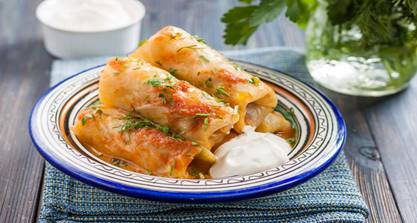

The Kiev cutlet
There are many versions of how the Kiev cutlet became popular in our country. And the occasion here was a Banquet in honor of a landmark event-the return of the Ukrainian delegation from Paris in 1947,where very important agreements were signed with the former countries-henchmen of Germany. The authorship of cutlets is also constantly claimed by American chefs, who allegedly came up with the famous recipe. According to legend, chicken cutlets were constantly ordered by emigrants from Kiev, which led to the emergence of their name - "Chicken Kiev" (chicken Kiev).However, with all due respect to Ukrainian and American restaurateurs, the French are much more likely to be called the authors of cutlets in Kiev. The fact is that in France there are two similar dishes at once: côtelettes de volaille ("poultry cutlets") and poulet à la Maréchale (fillet, breaded). And this delicacy got to Russia in a rather traditional way back in the 19th century. Then the Russian nobility was simply obsessed with French cuisine. Cooks from France came here in droves to work. In addition, many Russian chefs were trained and trained in the capital of world culinary fashion. Naturally, the "croquettes de volei" (came up with the famous chef Nicolas Appert) they also fell in love with the Russian nobility. But after the revolution, it was decided to fight with all sorts of bourgeois names, so the dish began to be renamed. It was the Kiev cutlet that became the first semi-finished product from Marks and Spencer's, which was sold everywhere in 1979 at a price of 1.99 pounds. The dish was positioned as an advanced "teleuzhin" for the middle class, which a working mother could "cook" at the end of the day for her family.
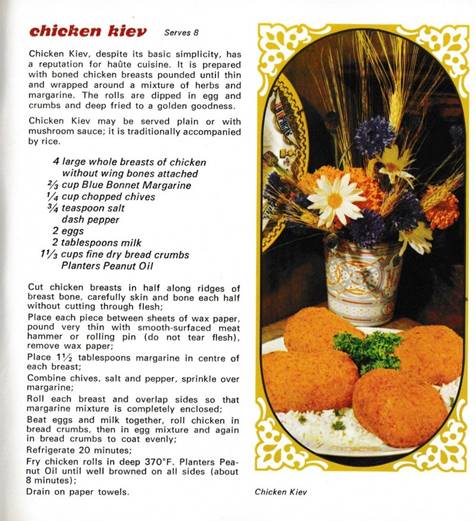
Mayonnaise.
There are two versions of his invention.
According to one of them, it was in 1757. The Duc de Richelieu, commander of the French garrison, conquered the city of Mahon, the capital of the Spanish island of Minorca, and then the city was besieged by the British. The French have almost no food left except eggs and olive oil. Omelets and scrambled eggs were made from these products. You understand that such a "variety" can be fed up not only with the aristocrat who is used to delicacies. And so Richelieu, by all means available to the Duke, showed the cook his displeasure. The resourceful cook ground the egg yolks with salt and sugar, added oil and spices to the resulting mixture, and beat it all thoroughly. Favorite sauce in honor of the city of Mahon called Mahon-mayonnaise.According to another version, the invention of mayonnaise is associated with the name of Duke Louis of Crillon. This event is dated to 1782, when this commander, being in the Spanish service, won the city of Mahon from the British. What kind of battle it was is unknown, but thank you that someone thought to celebrate the victory in it. At the feast, you must think, there were dishes-not to count. Some of them were served with a new sauce made from products that the island of Minorca was famous for — Provencal olive oil, Turkey eggs, lemon juice and red pepper. Apparently, I liked the sauce. The fame of it spread throughout France, it was called "Provencal sauce from Mahon". In honor of the city of Mahon, it was named "mayonnaise" and became a classic dressing for cold appetizers. In those days, this sauce was very expensive, because the butter and yolk are not so easy to mix by hand. It was only with the advent of electric mixers that mayonnaise became relatively cheap. But at the same time, unfortunately, significantly lost in the image. Now it is the most common commercially produced sauce.
Receipe
2 raw chicken eggs; half a teaspoon of salt and the same amount of sugar; 2 tsp mustard; glass of vegetable oil; 1 tablespoon lemon juice.
For the mixer, step by step: separate the egg whites and yolks, put them in a large bowl. Add mustard, sugar, salt and mix everything on low speed. Without stopping whipping, pour in the oil in portions. After thickening, increase the speed and pour out all the oil, lemon juice, mix well.
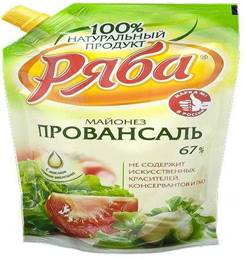
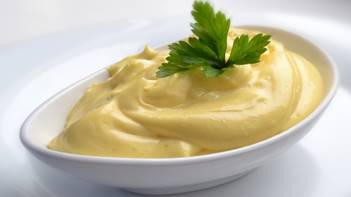
Ice cream
Ice cream accompanies humanity for thousands of years. The history of ice cream is very ancient and fascinating.The first ice cream appeared not in Ancient Greece or Rome, but in Ancient China 5 thousand years ago.
The Chinese ate snow and ice mixed with slices of oranges, lemons, and pomegranate seeds. Recipes and storage methods were kept secret and were declassified only in the 11th century BC in the book "Shi-king" - a canonical collection of ancient songs.
At the court of the Roman Emperor Nero (I century ad), cooling and sweetened juices were already widely used. It is noteworthy that the snow for their preparation was delivered from remote Alpine glaciers, and for long-term storage of snow, roomy ice cellars were built.
Ice cream was served to Alexander the great during his campaigns in Persia and India. During the long siege of cities, a large amount of snow was extracted from the mountains, in which berries and water were also frozen. In order to keep the snow from melting, special relays of slaves were organized. By the way, it was his soldiers who came up with the idea of adding wine, honey and milk to water with fruit.
According to legend, the recipe for fruit ice cream (chilled sorbet) was brought to Europe from China by the Venetian traveler Marco Polo at the beginning of the XIV century. Recipes for making ice cream were classified for a long time, and court cooks took a vow of silence about everything related to its preparation.
History has brought us the legend that among the fans of ice cream was Napoleon Bonaparte himself. In the declining years of the former ruler of Europe, his admirers sent to the island of Saint Helena a device for making ice cream.
Under Napoleon III (1852-1870), Paris first produced ice cream in cups and ice cream (the famous ice cream comes from the French city of Plobieres-Le-BEM), in Italy-great lovers of mixing the most incredible products, came up with ice cream-assorted with additives of fruits, nuts, liqueur, pieces of cookies and even flowers, in Austria - coffee glace and chocolate ice cream. In 1919, the American Christian Nelson developed recipes for ice cream glazed with chocolate. It was called "eskimo pie" (eskimo pie). Nelson drove his products around the cities and sold them while showing a movie about Eskimos. In the end, the word "pie" dropped out, and ice cream on a wooden stick was simply called Popsicle.
Thus, the technique and technology of industrial production of ice cream was constantly improved..

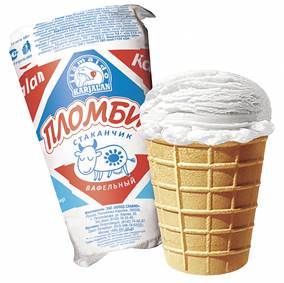
Napoleon Cake"
There are several theories about the origin of this delicacy. According to one of them, the Napoleon cake got its name thanks to the city of Naples, where it was prepared. According to another legend, the cake "Napoleon" was specially invented and baked on the occasion of the centenary of the victory at Moscow over the troops of Napoleon. For this anniversary, a whole range of drinks and dishes appeared, decorated in a festive way. There was also a new cake-puff pastry with cream, made in the form of a triangle, which was supposed to see the famous triangular hat of Napoleon. . But in some sources, we also find a legend that indicates that Napoleon is still related to French cuisine: "Soon the cunning cook decided to consolidate his success with the Emperor. And I did it ingeniously and simply: I took an old French pie "Royal Galeta", which in France is traditionally bought for the Holiday of Kings (as we have cakes for Easter), cut it into pieces, and put custard between the layers, varying it with whipped cream and strawberry jam. The delicacy was modestly called "Napoleon" and was a tremendous success with gourmets and Bonapartists."
The best minds of confectioners who worked at the houses of aristocrats worked on this miracle of cooking. The cake consisted of many thin cakes, smeared with sweet cream. The cake became a kind of symbol of Russia's victory over Napoleon.
Time passed, mores changed, and the Napoleon cake still remains a favorite. Now the recipe for this delicacy is passed down from generation to generation. And every Russian family has its own special secret, how to make a cake "Napoleon" tender and very tasty.
Receipes
Two layers of puff pastry, egg, for cream: 1 Cup sugar, 2 eggs, 2 tbsp flour, 2 cups milk, 200-250 g butter, vanilla to taste
So, take the puff pastry. Defrost it, roll it out a little on a surface sprinkled with flour. We moisten the baking sheet with water, lay out our layers, pierce it with a fork or knife and put it in the oven. Bake at 180 degrees until ready. When the layers rise and become Golden in color, they must be removed from the oven. Hot to pass on to another dish.
Prepare the cream. To do this, mix the sugar, eggs, and flour. Pour all the milk, stir well and put on fire. Cook over medium heat, stirring constantly, until thickened. Then remove the cream and cool completely. Add the butter, vanilla, and mix. Paste the dough layers with cream and assemble the cake. Trim the sides, and sprinkle the remaining crumbs over the top and sides of the cake.
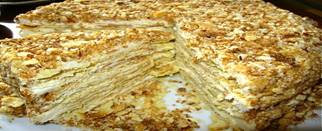
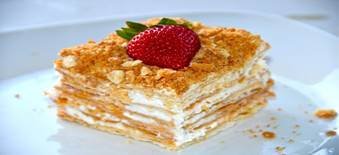
Russian salad
Its culinary history dates back to 1860, when the French chef and owner of the Parisian restaurant of the highest category "Hermitage" Lucien Olivier first offered his visitors a delicious salad, named after him "Olivier".
Initially, Olivier did not think of inventing any new dish. But one day, he made his signature dish, "game mayonnaise."What did the Russian guests who were served this dish do? They boldly mixed all these ingredients into a common pile and gladly devoured this gruel under vodka.
To the Frenchman's credit, he did not resent such disrespectful treatment of his dish, and the next time he simply diced all its ingredients. The salad made a splash and immediately became the same attraction in Paris as the Cathedral of Notre-Dame or the famous Montmatre. Parisians and guests of the capital specially went to the" Hermitage "on " Olivier", so that the tavern soon" grew " to an expensive restaurant, providing its owner with a comfortable existence. The method of preparing the salad Lucien Olivier kept a secret and with his death, the secret of the recipe was considered lost. However, the main ingredients were known, and in 1904 the recipe for making salad was reproduced.
Ivan Mikhailovich Ivanov, the chef of the restaurant "Moscow", who in his youth served as an apprentice to Olivier himself, remembered him in the thirties.
Given that grouse was clearly not a worker-peasant food, Ivanov replaced them with chicken, the proletarian origin of which there was no reason to doubt. The salad was called "Capital". Since the forties, this snack has become popular in all Soviet restaurants, and then in home cooking. The main rule in its manufacture is the EQUALITY of the weight parts of its components: chicken meat, potatoes, pickled cucumbers, boiled eggs and mayonnaise.
Receipe
Classic Olivier 1860 g should consist of:
2 grouse, veal tongue a, quarter pound of caviar half a, pound of fresh salad
25 PCs. boiled crayfish, half a can of pickles
half a can of soy Kabul
two fresh cucumbers a
quarter of a pound of capers
5 hard-boiled eggs
For the sauce: Provencalmayonnaise should be made in French vinegar with 2 eggs and 1 pound of Provencal (olive) oil.
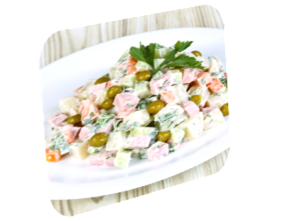

Dumplings
Dumplings have long been considered a native Russian dish-hearty and surprisingly delicious. Although the word "pelmen" itself comes from two words of Finno-Ugric origin: "PEL" - ear, ear and "Nyan" - dough, bread. Ears stuffed with minced meat dough perfectly fit into the traditions of many peoples inhabiting Russia-frozen dumplings are perfectly preserved all winter, without losing their qualities, and the meat hidden in the dough does not attract predatory animals as usual. Dumplings could be taken with you on long winter trips, providing a full hot meal, prepared in advance in large quantities and with a variety of fillings.
It is believed that the dumplings came to us with the Tatar-Mongol Horde from China - there they are known as" Yui-PAO "and"dzy-dzy". But there are similar dishes in other national cuisines: Italian ravioli, Ukrainian dumplings, Uzbek manti, Armenian boraks, Georgian khinkali.
In ancient times, the inhabitants of the Urals pelmeni had a ritual meaning - they were a symbol of sacrifice of all types of livestock. Therefore, the traditional Ural meat filling consists of three types of meat-beef, lamb and pork, which are combined in a strictly defined proportion: - 45% beef, 35% lamb, and 20% pork.
Dumplings are one of the most democratic dishes. They can be found in the menu of both working and student canteens, as well as expensive restaurants.
Receipe
400 gr. flour; 200 ml. of boiling water; 0,5-1 tsp salt (in the dough); 3 tbsp sunflower oil; 0.5 kg. beef pulp; 1 large onion; Salt, spices to taste (in the filling). Greens, sour cream, oil for serving.
1. Measure the flour in a bowl, add salt and sunflower oil. 2. Pour in boiling water and knead a soft, elastic dough 3. Cover with a cloth and leave to stand at room temperature for 30 minutes. 4. Chop the meat, onion, salt, and pepper in a meat grinder 5. Make dumplings using a mold or by hand. 6. Cook in salted water for 3-4 minutes after the dumplings boil and float to the top. 7. Serve with melted butter and sour cream, sprinkled with chopped dill.
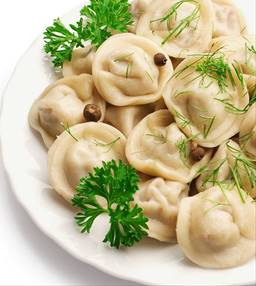
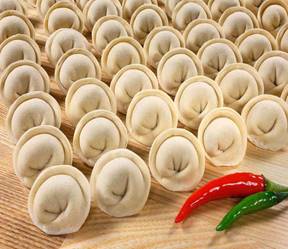
Pizza
National dish of Italy, in the form of a round open pie covered with tomatoes and melted cheese (usually mozzarella). Pizza can be baked with various fillings (meat, ham, salami, seafood, vegetables, fruits, mushrooms, herbs, and others).
History of pizza
Pizza prototypes have existed since the ancient Greeks and Romans. In connection with the introduction of tomatoes to Europe in 1522, the prototype of Italian pizza appeared in Naples. In the 17th century, there were special people ("pizzaioli", pizzaiolo) who prepared pizza for Italian peasants. Pizza was loved by the wife of king Ferdinand IV of Naples, Maria Carolina Lorena (1752-1814), and later by the Italian king Umberto I and his wife Margherita of Savoy, after whom one of the pizza recipes was named. In the United States, pizza came at the end of the second half of the XIX century and first appeared, apparently in Chicago. In 1957, there were pizza-semi-finished products.
Pizza has spread mainly in the United States and Europe, where there are developed chains of pizzerias, most of which offer free pizza delivery to the specified address. Russia has a simplified version of pizza-a hot sandwich, where a slice of bread is used instead of dough. The first partially kosher pizza was made by the Israeli pizza chain Pizza master for Passover. The Japanese version of pizza ("okonomiyaki") is a fried flatbread with seafood and vegetables, well smeared with a special sauce and sprinkled with dried tuna shavings on top. When serving, this pizza is divided with a flat spatula "Kote".
Receipe
Classic pizza dough is made from special flour (a mixture of flour and durum flour), yeast, sugar, salt and water. Pizza dough is kneaded by hand, and after proofing it is rolled out in a thin layer (usually up to half a centimeter thick). Pizza dough is covered with tomato sauce. After that, you can add almost any fillings. Also, the "American" version of pizza, with a thicker layer of dough, has become widespread. Classic varieties of Italian pizza: pizza Margarita (mozzarella, tomatoes, oregano), pizza capricciosa, pizza diabola, pizza four cheeses, Viennese pizza, Roman pizza, pizza rucola, Hawaiian pizza and many others.

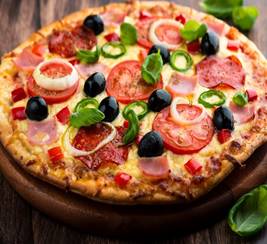
Pilaf
Pilaf, it turns out, was invented by cooks
Alexander The Great. He was very particular about food and liked hot spicy food. So, in one of the trips, the cooks cooked rice with carrots and red pepper. Of course, it was very spicy, and to somehow soften this taste, grapes and apricots were also added to it. Pilaf in Greek means "diverse composition". Well, as it is clear from the subsequent history, after the Macedonian pilaf spread to the whole of Central Asia,where the recipe and the donkey. In the old ones
the Chronicles of the peoples of the East mention that even in the X—XI centuries, pilaf was considered an honorary dish, it was served both at weddings and on major holidays, and at memorial rites. By the way, an interesting story is connected with pilaf.
The great scientist Abu Ali Ibn Sina (Latinized name - Avicenna, Avicenna, circa 980-1037 years.) used pilaf in the treatment of patients. There are many parables and legends about this.One of the most beautiful legends tells that once upon a time a Prince, the son of the ruler of Bukhara, fell madly in love with a beautiful woman from a poor family. He was a Prince, and she was only the daughter of a craftsman, and by the laws of the time they could not be together. The Prince, tormented by the yearning of unrequited love, began to wither quickly, lost his appetite and sleep, and refused to eat.
Relatives, concerned about the young man's condition, brought him to Abu Ali Ibn Sina. The secret was revealed: the Prince was in love with the artisan's daughter. Having found out this, Ibn Sina prescribed treatment: give the emaciated young man once a week "palov Osh" until he regained strength, and then play a wedding.The name of the dish "palov Osh" consists of the initial letters of all products included in
its composition is: P (pies) — bow; And (ELA) — carrot; L (Lahm) — meat; On ('olio)
fat; To (vet) — salt, O (Ob) — water, sh (Shala) — Fig.
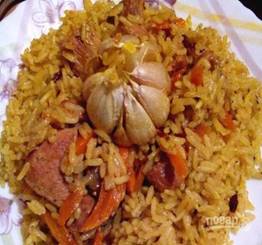
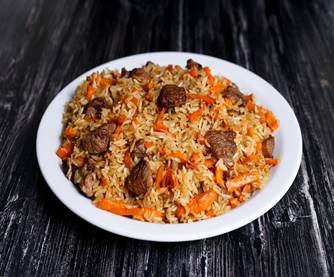
History of stew
The siege of one of the cities of Languedoc — and times were harsh, the hundred Years ' war was in full swing — had been going on for a long time. Residents desperately fought with the enemy and endured hardships, but the forces, alas, tend to end. in addition, the already modest food supplies were rapidly disappearing. And then one day the townspeople who were bravely holding the defense gathered in the square and built a huge fire, heated a huge cauldron on it,and everyone put in it what they managed to scrape together from the ground. The townspeople kept the fire going, put bits and pieces of anything in the cauldron, and thus fed amicably. Help soon arrived, the siege was lifted, and the languedocians celebrated their liberation noisily.But what is surprising: for the festive feast on the occasion of the end of the siege, they jointly prepared not venison on a spit, but a dish in a huge cauldron of pieces and pieces of what each of them brought. Rule one: the same cutting of all vegetables you want in pieces, you want in blocks, cubes, straws, etc. - exactly and accurately.
Receipe
Pork ( or beef) - 400 g Eggplant - 1 PC. Zucchini - 1 PC. Tomato - 1 PC. Onion - 1 PC. Carrots - 1 PC. Garlic - 2 cloves Sweet pepper - 1 PC. Bitter pepper - a small piece Salt-to taste Aromatic herbs - to taste
Vegetable oil - if necessary Cut all the ingredients into small cubes, add salt, water, add vegetable oil, herbs and simmer for about an hour.
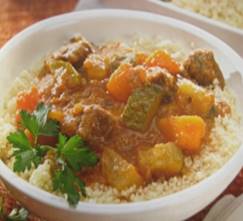
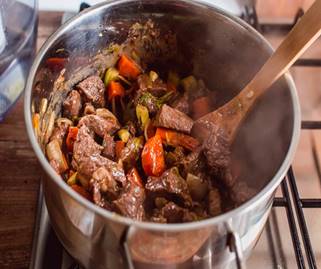
American national «Caesar salad»
Lettuce leaves, grated Parmesan, browned toast, egg and Worcestershire sauce.[cut]
Here is a simple recipe for a dish that for Americans and Europeans is the same as for us salad "Olivier". We are talking about the national American salad "Caesar", which is more than 80 years old.
A salad with a" historical " name has nothing to do with the Roman emperors, as one might think. It was invented and dubbed so during the American "prohibition" by a certain Caesar Cardini (1896-1956), an American of Italian origin.
In 1896, near the town of Lago Maggiori in Italy, a boy was born, who was named Caesar. Not Gaius Julius, of course, but simply Caesar, with the simple Italian surname Cardini.After the First world war, he and his brother Alex emigrated to the United States, where he opened a small establishment combining a hotel and a restaurant called "Caesar's Place".One fine day of Independence of the United States on July 4, 1924, the hotel was Packed with movie people who had escaped from Hollywood to celebrate a national holiday, "Caesar" had enough alcohol, but the food that was demanded by unexpected numerous guests was a complete failure - all supplies ran out. Caesar Cardini had no choice but to quickly build something from the few products that were in the pantry.
In 1953, three years before the death of the great chef Caesar Cardini, the salad was noted by the Epicurean Society in Paris as "the best recipe that has appeared in America in the last 50 years".
Receipe
- RUB a salad bowl liberally with garlic,
- put chopped lettuce leaves in it
- pour in the first cold-pressed olive oil
- break the eggs there, exactly 1 minute boiled in boiling water
- add freshly grated Parmesan cheese
- add fresh lemon juice,
- add the available herbs, preferably Basil,
- diced and lightly fried in olive oil until slightly dry croutons of fresh white bread,
- a few drops of Worcestershire sauce;
- mix and serve immediately.
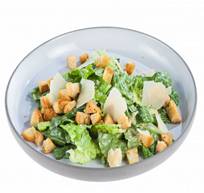

Cheese
There are quite a few legends About the origin of cheese. According to one of them, the Arabian merchant kanan set off early in the morning on a long journey through a deserted area. He took food with him, as well as milk, which he poured into a traditional vessel for nomads - a dried sheep's stomach. When it was dark, the merchant stopped for the night and decided to drink milk before going to bed... instead of milk, a watery liquid (serum) flowed from the sheep's stomach, and a white clot appeared inside the vessel.
Disappointed, kanan still ate a piece of this clot and was surprised by the pleasant taste of the new product. So cheese was born, and it happened more than four thousand years ago. Being a simple and artless man, the merchant shared his discovery with his neighbors, and soon the method of making cheese became known to many nomadic tribes.
From Arabia the cheese then got to Europe
While in the Netherlands, Peter 1 appreciated Dutch cheeses and, to establish their production at home, brought to Russia foreign masters-cheesemakers.However, the first cheese factory in Russia was established only in 1795 in the Tver province on the estate of Prince Meshchersky. The business was conducted at the factory by a foreign master. Low-powered cheese factories appeared in some other places, but soon withered away. The actual beginning of industrial cheese making in Russia is considered to be 1866,
Such accessible and understandable propaganda of the benefits of cheese-making, the opening of dairy schools, and the encouragement of cheesemakers by the state contributed to the rapid development of mass cheese production. Gradually, factory cheese penetrated into all segments of the country's population. By the end of the XIX century, the products of Russian cheesemakers stepped outside of Russia.
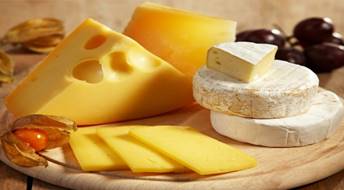

Tart Taten
The story of the Taten sisters, who decided to bake an Apple pie, but forgot to put the dough on the bottom of the mold, is found in all culinary collections. The apples were caramelized in the oven by themselves, and to hide the mistake, the sisters covered them with a cake and sent them back to the oven. The finished pie remains to turn over and put on a dish as if nothing had happened. It was in 1888, in Lamotte-Bevron, a remote town a hundred leagues from Paris. But few people know that as a result, the miscalculation turned out to be a lucky ticket for the sisters: the eldest of them, Stephanie, was invited by Louis Vaudable, the owner of Maxim's restaurant in Paris, to become a pastry chef. And for Lamotte-Bevron, tarte Tatin has become a major attraction: the carefully remodeled Tatin sisters hotel has a restaurant where their shape-shifting pie is baked with a dozen different fillings-from classic apples, peaches and plums to black pudding and caramelized leeks.
Receipe
1.6 kg of apples Ranet or Golden, Royal gala, Granny Smith, Jonagold, jonared 80 g melted butter 130 g of sugar 170 g flour pinch of salt 70 g butter 20 g of sugar 1 egg
For the dough, take flour, butter, salt, sugar and RUB all the ingredients with your hands until fine crumbs form. Then enter the egg and quickly knead with your hands. Set the dough aside. Take a non-flammable form. Put the melted butter and sprinkle with sugar. Peel the apples. Cut into quarters and place them in a circular shape next to each other, with the curved side down. Then make another layer of apples, sprinkle a little sugar between the layers and put a few pieces of butter. Lay out the apples beautifully, as the pie will need to be served upside down, apples up. Put the apples in the oven and bake at 200 degrees for about 30 minutes. Meanwhile, roll out the dough. Then cover the apples with a layer of shortbread and put them back in the oven for another 25 minutes.
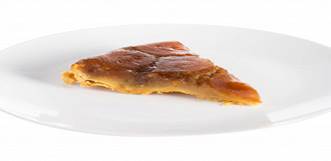
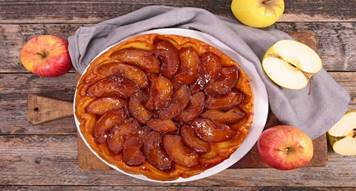
Tiramisu Dessert"
The first portion of the famous dessert was prepared in Northern Italy at the end of the XVII century. It happened almost by accident. The Tuscan Archduke Cosimo III de ' Medici, a famous sweet tooth, decided to pay a visit to neighboring Siena one day. Local chefs, wanting to please the high guest, showed imagination and prepared a completely new dish "for sweet", calling it zuppa del duca (Duke's soup). [cut] The Archduke liked the" soup " so much that he devoured every last spoonful, and took the recipe with him to Florence, because he could not imagine his life without this delicacy. Florence, thanks to the wise rule of the Medici dynasty, became by the end of the XVII century a center of art, where artists, sculptors and poets flocked from all over Italy. They appreciated the" know-how " of Sienese confectioners, drawing from it the creative forces to create their immortal masterpieces.
From Florence, the "Duke's soup" moved to Treviso, from there to Venice. Golden-haired Venetian courtesans quickly figured out what the beauty of this high-calorie dessert is and began to use it before the most important dates. It was with their light hand that the fashionable dish received a new, now final name "tiramisu", which in Italian sounds somewhat ambiguous:"cheer me up".
Receipe
To make a classic tiramisu, RUB 6 egg yolks with sugar until smooth, then add 450 grams of mascarpone, a little Marsala and mix everything well. Then carefully transfer the whipped whites to the resulting mixture. Boil 200 grams of espresso coffee, cool it and mix it in a wide bowl with Marsala. Quickly dip savoyardi cookies one by one into the coffee-tea mixture and spread them out on the bottom of a square dish (you can use plastic, you can use Teflon, you can use foil). Top with a layer of mascarpone cream. Be sure to sprinkle it with chocolate chips. Next – another layer of coffee and wine-soaked cookie sticks and a layer of cream with chocolate chips. Put all this in the refrigerator for at least 6 hours. Before serving, sprinkle liberally with bitter cocoa powder.
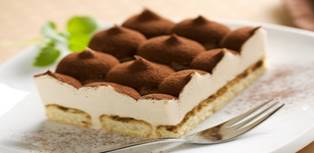
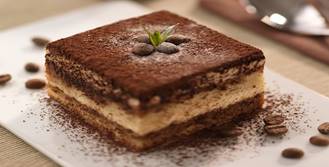
Peking duck
The history of the most famous Chinese dish "Peking Duck" begins during the sung dynasty (10-13 centuries ad), when the duck was baked in a clay crust. Later, during the yuan period (13th - 14th centuries ad), the duck was stuffed with mutton to adapt the dish to the tastes of the Mongol conquerors. During the Ming dynasty (14th - 17th centuries ad), duck was marinated in such a way that it was white, with thin skin and especially tender meat.
Receipe
Today, "Peking Duck" is undergoing a seventy-day (!) training. First, it is fed a special mixture of cereals, then, when it gains the desired weight, it is cut. After that, it's time for cosmetic procedures.
You need to start cooking the duck a day before it is served on the table. Boil a container of water, hang the duck by the neck (preferably on a hook, but you can just hold it vertically) and pour it with steep boiling water so that the skin of the duck turns white. Then let the water drain, soak the duck dry with a paper towel, RUB dry sherry or Chinese rice wine inside and out. Next, RUB the duck with coarse salt, also outside and inside. After that, the duck should be placed in the cold for 12 hours, without covering anything. It is best if it is in an upright position-suspended or impaled, for example, on a bottle. The duck will bleed, so you need to put a plate under it.
After 12 hours, remove the duck, lubricate it with 2 tablespoons of honey on the outside. Honey should be distributed over the surface in a thin, even layer. Again in the cold (again preferably in an upright position) for another 12 hours.
To make the duck not only delicious, but also beautiful, air is blown into the holes between the skin and the meat, wrinkles are smoothed out, and the crust becomes crispy after frying. Then the duck is rubbed with spices, and, after it has dried, it is fried in a round oven over an open fire. Many people associate Chinese cuisine with "Peking Duck".

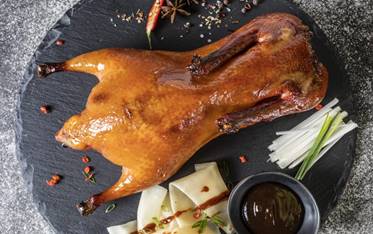
Hot dog
In 1987, the 500th birthday of the hot dog was celebrated in Frankfurt, Germany. Although, the Austrians dispute this, and believe that their "Wiener sausages" are proof of the origin of the hot dog.
A Frankfurt butcher made sausages called "dachshund sausage". By the way, dachshund-so called "Dachshund". A German immigrant brought this sausage to the United States. And in 1871, he began selling sausage wrapped in slices of bread. He managed to sell 3,684 dachshund sausages in a year. This has become a very popular product.
And in 1901, Illustrator Dargan noticed that a sausage seller started using rolls instead of the usual slices of bread, in which he carefully placed the sausage. Dargan decided to illustrate the case. But he wasn't sure about the spelling of "dachshund" and just called the product "hot dog".
Putting meat between slices of bread is like from ancient times. The sausage was mentioned in Homer's Odyssey.
Receipe
Ingredients: cooked sausage; special bun; small onion; small cucumber (pickled or salted); American mustard (compared to Russian, it is less spicy); ketchup.
Cooking steps: to make a classic American-style hot dog, you need to fry the sausages on the grill. In its absence, you can do with a regular oven. We make a deep longitudinal incision in the bun and pour mustard into them (you can smear it with a knife all over the inner space of the bun). Hunting sausage in hot form is put in a bun. Cut the onion into half rings. Cucumbers – in thin circles. Spread the chopped vegetables on the sides of the sausage. Top with ketchup. Classic hot dog can be served to the table!


Charlotte
CHARLOTTE - (FR. charlotte). sweet dish of baked dough or crackers with layers of apples.
What is Charlotte and how to cook it? At first glance, everything is very simple - fruit filling and dough on top. No excesses - everything is simply indecent.
In fact, this dish appeared in France under the name Charlotte. The dish consisted of sweet cream with fruit, white bread, and liqueur. It was prepared long and difficult. In any case, this dish is not easy to prepare at home. Where this name came from is now difficult to say. There are several versions. According to one version, the name comes from the old English word charlyt, which is corrupted by the French, which means \’a dish with sweet cream\’. Probably because it is based on a cream like the one used in creme brulee, only with fruit additives.
Another version is romantic. They tell of the love of a certain cook for a certain poor Charlotte, and the cook named this dish after her. But the most likely thing is that this dish is named after Queen Charlotte, the wife of George III, who was a big fan of apples.
Later, around the beginning of the XIX century, a dish called Charlotte Russe appeared. It was invented by a French cook who was in the service of Alexander I and her name was Marie Antoinette Karem.
Receipe
Wheat flour-230 gr; Sugar-230 g; Eggs - 6 pieces; Apples-3-4 pieces; milk-150gr; baking Powder-1.5 tsp; Salt-1 pinch; Vanillin - 1 sachet; Cinnamon-0.5 tsp; butter-10 gr; Powdered sugar.
Beat the eggs with sugar (150 g), pour in the milk. Mix with sifted flour, baking powder, vanillin and cinnamon. Add thinly sliced plates, peeled apples. Spread in a well-oiled form, on top of the dough pieces of butter and sugar (50 g). Bake Apple pie at 180 degrees, 50-60 minutes.
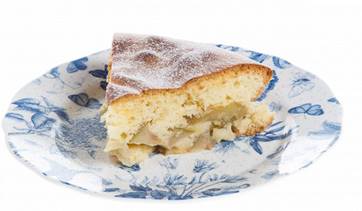
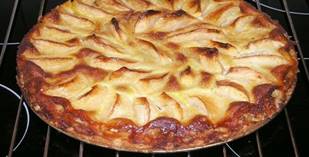
Vinaigrette salad
The history of vinaigrette salad is also connected with France. Legend has it that during the time of Alexander I, the Frenchman Antoine Karem worked side by side with the court cooks. One day, when he saw them pouring vinegar on a mixture of beets, potatoes, carrots, and pickles, he asked, puzzled:" Vinaigre " (vinegar)? Our craftsmen decided that the cook suggested the name of the salad, and nodded in unison: "That's right, vinaigrette!" That's where vinaigrette came from in our country.
Receipe
For a classic vinigrette with peas, you will need: beetroot (boiled), pickled cucumber , green peas , boiled potatoes, boiled carrots. Cut all the ingredients, salt to taste, and fill with ordinary vegetable oil.
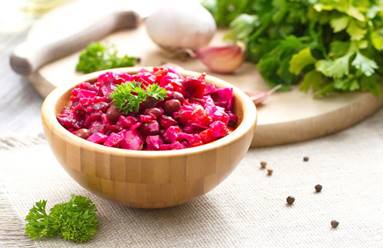

"Herring under a fur coat".
No less interesting is the history of the name "herring under a fur coat". Lettuce appeared in 1918, when political disputes broke out in Moscow Inns and then turned into fights. The resourceful cook Aristarkh Prokoptsev prepared a conciliatory dish "to Chauvinism and decline-fight and anathema", abbreviated " sh. U. b. a.". Potatoes symbolized the peasants, herring — workers, and beets — revolution. Over time, the history of the recipe "Herring under a fur coat" was forgotten, but the name remained.
Receipe
Ingredients (for 8 persons) • * the herring itself is spiced, fresh-1 piece. (about 400 gr.) * Medium carrot-2 PCs. * Beetroot – 1 PC. (large) or 2 PCs. (medium) • Potatoes-2-3 PCs. * Onion as well as beetroot – 1 PC. (large onion) or 2-3 PCs. (small) * dressing in the form of mayonnaise "Provencal" - 1 PC. (150-200 gr.) • chicken Egg-2-3 PCs. (By the way, there were no eggs in the original classic recipe. They were added a little later, which played on the taste of the salad) * Salt a little – to taste
The first, as many advise, is grated potatoes. Do not forget to lubricate with mayonnaise (you can use it as a mesh). Then, the second layer – herring. On top of the herring-onions. The fourth layer is crumpled boiled eggs with a fork. Fifth-carrots. Sixth-again, potatoes. The most recent, according to the classic recipe, lay out a layer of beets. Be sure to put it in the refrigerator for 2-3 hours. To salad "herring under a fur coat" soaked and acquired a unique taste.
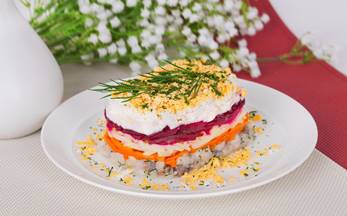

Pavlova dessert
Pavlova dessert is named after the Russian ballerina Anna Pavlova, who went on tour to Australia and New Zealand in 1926. According to the new Zealand version of the story, the chef at the Wellington hotel at the time came up with an airy dessert in her honor, inspired by her tutu. Australians, on the other hand, believe that the Pavlova dessert was invented at a hotel in Perth and was named after a ballerina when one of the visitors said that the dessert was "light as Pavlova".
Anna Pavlova was an icon of her time, she was adored and admired all over the world. As a result, many chefs around the world named their dishes after her. In France, for example, there are frog legs “A La Pavlova", in America there is ice cream "Pavlova".According to the Oxford English dictionary, the first recipe called “Pavlova " appeared in 1927 in a cookbook published by a new Zealand gelatin company. And it was a multi-layered jelly recipe, so it's too early to attribute new Zealand's glory. However, new Zealanders believe that any recipe called “Pavlova " is proof that it is their invention. And the recipe for the dessert that we know now under the name “Pavlova " appeared on the island very soon after the jelly recipe.Australians object: even if the new Zealanders came up with the name, the Australians came up with the dessert that is now known all over the world.
Receipe
Egg whites – 2 PCs. Powdered sugar-100 g; Corn starch-1 tsp.; Lemon juice - ½ tsp.; Heavy cream-120 g; Berries – 100 g.
Put the whites in a clean, dry dish. The mass will rise faster if the proteins were from the refrigerator.; * Gradually add the powder to the proteins, without ceasing to beat, then enter the starch. At the final stage, add lemon juice; * Cover the baking sheet with parchment paper or grease with butter; * Lay out 6 baskets, making a recess inside. Put the blanks in a preheated 140 degree oven for 10 minutes. Then reduce the temperature to 100 degrees and bake the meringue for another 30-40 minutes; • While our dessert is being prepared, let's start making cream. Beat them with 1 tablespoon of powdered sugar. We work slowly at low speeds. * Carefully spread the cream on which we place the berries.

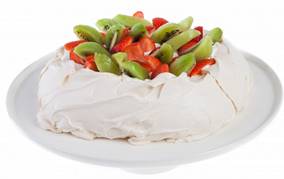
"Delicious journey across countries and continents"
Each nation has
its own cuisine, which is associated with geographical conditions, the world of
flora and fauna, the development of agriculture, religious beliefs and customs.
Living in a multicultural world allows a person to get acquainted with the
gastronomic features of different countries, try their dishes and, if desired,
include them in their diet, diversify their food. 
Task 1. Выберите страну:
1.Gratin-a dish of vegetables, meat and seafood baked in the oven until a crust is formed, invented in this country
a) Italy b) France c) Spain d) Lithuania
2. An Analog of Russian cabbage rolls, the "Tyun" cake, which includes rice, beans, cabbage leaves and pork, appeared in this country:
a) Vietnam b) China c) Japan d) Thailand
3. Farfalle, or butterfly macaroni, has become the property of this world cuisine:
a) French b) Italian c) Polish d) German
4.What country invented pudding?
a) Sweden b) Switzerland c) Belgium d) England
5.In this country, they eat rotten shark meat, which is called haukarl:
a) Finland b) Iceland c) Norway d) Sweden
6.A product made of dough with cottage cheese — placinda, which is also added apples and nuts-is very popular in this country:
a) Kazakhstan b) Moldova c) Ukraine d) Uzbekistan
7.Tortillas-tortillas with fillings that are traditionally cooked over an open fire-were invented by ...
a) Mexicans b) the Portuguese c) Brazilians d) the Spaniards
8. One of the most popular dishes in Russia — goulash-was a dish of shepherds in this country:
a) Poland b) Hungary c) Slovakia d) Slovenia
9. What cuisine of the world does tobacco chicken belong to?
a) Georgian b) Russian c) of Azerbaijan d) Belorussian
10. Soup called "Kejanguk" is made from meat that is unusual for Europeans and comes from ...
a) Pakistan b) Korea c) Indonesia d) Mali
11. Which country's National dish is paella?
a) France b) Austria c) Spain d) Finland
12. In which country are dumplings called "Dyushbara"?
a) Azerbaijan b) Bulgaria c) Armenia d) c) Slovakia
13. Kabartma Tortillas from which country?
a) Russia b) Hungary c) Romania d) Moldova
14. Which country's National dish is "Biltong" - long strips of dried meat seasoned with all sorts of spices?
a) Kazakhstan b) SA c) Norway d) Austria
15. What language does the word "Mayonnaise" come from
a) French b) Italian c) English d) Sweden
16. Banosh-flavored corn porridge with sour cream and cream, this is the national dish of which country?
a) Ukraine b) Belarus c) Kazakhstan d) Russia
17. Risotto-a common rice dish in....?
a) Italy b) Portugal c) Greece d) Romania
18 Kharcho is a bright representative of Caucasian cuisine. Which country's national dish is it?
a) Georgians b) Armenia c) Azerbaijan d) Russian
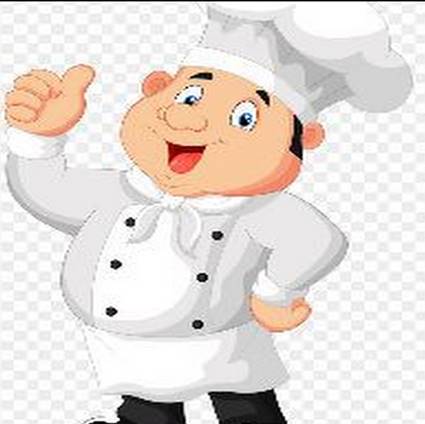

Task 2. Кроссворд «Your breakfast-sir!» заполняем по русски
|
1 |
|
|||||||||||||||||
|
|
||||||||||||||||||
|
|
||||||||||||||||||
|
|
||||||||||||||||||
|
|
||||||||||||||||||
|
|
||||||||||||||||||
|
2 |
6 |
9 |
|
|||||||||||||||
|
11 |
|
|||||||||||||||||
|
3 |
7 |
|
||||||||||||||||
|
|
||||||||||||||||||
|
4 |
10 |
|
||||||||||||||||
|
|
||||||||||||||||||
|
8 |
12 |
|
||||||||||||||||
|
|
||||||||||||||||||
|
5 |
|
|||||||||||||||||
|
|
||||||||||||||||||
|
|
||||||||||||||||||
|
|
Traditional food of Great Britain
Horizontally:
2. It comes with different fillings, in Russian it is called " …»
3. The delicacy of Wales is a lamb with a delicious sauce of fragrant plants.
4. Children love to take a nutty ... ..
5. a Typical English morning starts with it.
7. in the store "Fish and Chips" you can buy any fish, but the most popular is?
12. Northern Ireland is rich in this type of fish.
Vertical: 1. "Cottage pie" – "shepherd's pie" is a dish of mashed potatoes and minced meat. What is this dish?
6. Scottish soup "Kokki Likki" consists of very interesting ingredients, such as onion broth, chicken and dried fruit.
8. what kind of meat is the basis of the dish "Tikka masala"?
9. a piece of beef Baked in the oven.
10. the English love this meat, which is prepared in different ways of roasting.
11. Englishmen ' traditional dish in the morning.
Task 3. Fruit and vegetable quiz:
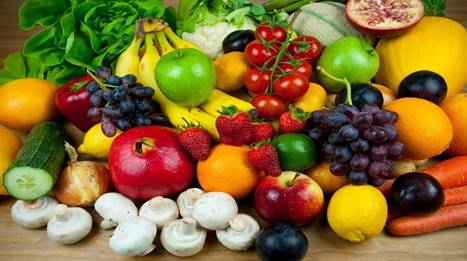
1. The name of a fruit from Latin literally translates to "grainy"?
2. The name of a fruit goes back to the Latin language and literally means "precocious"?
3. The name of a fruit in the Dutch language literally means "Apple from China"?
4. The name of a vegetable comes from the Latin word for "head"?
5. The name of a vegetable in the Greek language means "unripe, immature"?
6. What is the vegetable that the Italians call "the Golden Apple"?
7. We borrowed the name of the sweets from the French language where it meant "candy of quince". Call it.
8.The name of a cold soup suggests that it is made of beet with tops?
9. What vegetable is very well kept until spring, and so lent him in Russia ate more than turnips, cabbage and carrots, for which he received the title "penitential vegetable"?
10. In the name of any beverage it is clear that they are made of citrus?
11. Which two berries are poetically called "Northern grapes"?
Task 4. Guessing game «Which country you are talking about»

1.) The most popular holiday dish is pudding. Tea is the most widely used beverage. Breakfast usually consists of oatmeal, wheat or corn flakes with milk.
2) Vegetables are popular in this country, especially salads. Cheese is used to prepare various dishes, including the first ones. Another feature is a wide variety of sauces.
3. Use a variety of food products: vegetables, fish, sea products, legumes. They use a lot of different spices, spices and seasonings. Their favorite food is pasta.
4) The basis of the cuisine is vegetable products, seafood. Their favorite food is rice,favorite drink is green tea.
5) Like to combine seemingly incompatible products, such as meat and fish, meat and raisins. Soy seasoning is used in almost all dishes. Eggs are eaten in large quantities.
6. Which country is home to:
coffee
tea
potatoes
vanilla
cardamom
bean),
peas
eggplant
cucumber
corn?
Task 5: Cooking test

1. Which of these sauces belongs to Georgian cuisine?
a) Bolognese b) tartarus c) tkemali d)bermel
2. What is the usual dressing for Olivier salad?
a) mayonnaise b) vegetable oil c) vinegar d )mustard
3. What kind of porridge is called "porridge of the English kings"?
a) oat b) buckwheat c) rice d) semolina
4. Which of these flour products does not have a filling?
a) cheburek b) Galushka c) unbutton d) belyash
5. What dish of French cuisine, as the name implies, cannot be prepared without vinegar?
a) mayonnaise b) marinade c) vinaigrette d) julienne
6. What were dumplings called in the old days?
a) bear's ear b) pig the Piglet c)goat's foot d) hare's tail
7. What is the name of the cake translated from French means "kiss"?
a) meringue b) éclair c) sponge d)rum Baba
8. Name the home country of ketchup.
a) Bulgaria b) Hungary c) USA d) Mexico
9. The name of which confectionery product is translated from German as "whirlpool, abyss"?
a) Éclair b) strudel c) meringue d) cracker
10. In the dictionary of foreign words, this word means "a small sofa with a raised headboard". And in a modern kitchen, it's a small sandwich on fried bread. What is this word?
a) sandwich b) canapes c) toast d) hamburger
Task 6: Every cook should know this:

1.What ingredients do Italians traditionally put in pizza "Margarita"?
a) tomatoes b) tomatoes, cheese, basil c) tomatoes, cheese, pineapple
2.When was the first Burger made?
a) in 1885, b) in 1935 c) in 1985
3. What is considered a traditional Moroccan dish?
a) sushi b) cous cous c) paella
4.What is the most popular fruit in the world?
a) apple b) orange c) banana
5.The main ingredient of chocolate:
a) cream b) sugar c) cocoa butter
6. How do people eat rice and pasta in Japan and China?
a) special chopsticks b) fork c) hands
Task 7. Name the product by its description.
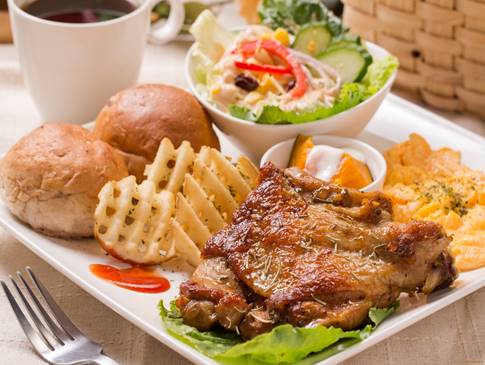
Task 8. Relate Proverbs to food:
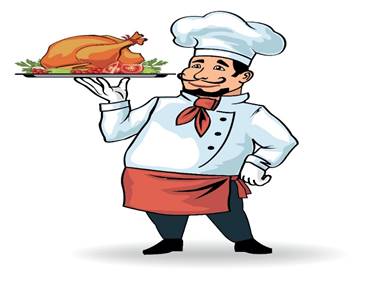
|
1. A home is made by pies, not by wall. |
a. На чужой каравай рот не разевай.
|
|
2. 2.Porridge and cabbage soup is our native food. |
b. Один с сошкой, семеро с ложкой.
|
|
3. Appetite comes with eating. |
c. Недосол на столе, пересол на спине.
|
|
4.They don’t carry samovars to Tula town.
|
d. На вкус, на цвет товарищей нет
|
|
5. Man shall not live by bread alone. |
e. Со своим самоваром в Тулу не ездят.
|
|
6. The first pancake is always lumpy
|
f. Кто не работает, тот не ест.
|
|
7. 14.Tastes differ
|
g. Щи да каша –пища наша.
|
|
8. He that will not work shall not eat.
|
h. O вкусах не спорят
|
|
9. Every one to his own taste |
i Где хлеб да соль, там и разговор.
|
|
10. Cast no greedy eye at another man’s pie.
|
j Кашу маслом не испортишь.
|
|
11. Not enough salt is hardly a fault, but too much salt is cook’s fault.
|
k Не красна изба углами, а красна пирогами.
|
|
12. One with a plough, seven with a spoon. |
l Не хлебом единым жив человек.
|
|
13. Too much butter is won’t spoil the porridge. |
m. Первый блин всегда комом.
|
|
14. This is bread and this is salt, and how be kind to speak your mind.
|
n Аппетит приходит во время еды.
|
Literal translation
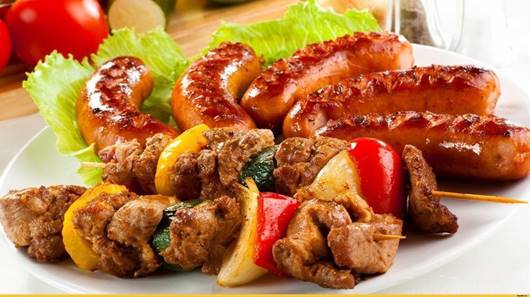
Task 9. Select a word:
Date – (финик, дата, день рождения);
Cold shop – (отдел заморозки, холодный цех, магазин);
Hot shop – (горячий цех, отдел выпечки, отдел полуфабрикатов);
Workstation – (рабочее место, станция, рабочие);
Strong cheese – (сыр с плесенью, твердый сыр, острый сыр);
Sweet cherry – (вишня, сладкая вишня, черешня);
Sweet meat – (леденец, засахаренные фрукты, мясо со специями);
Top of milk –(сливки, молочная пенка, сливочное масло);
Sour cream – (сметана, скисшие сливки, сливки);
Takeaway – (еда на вынос, праздничная еда, банкет);
To brown – (подрумянивать, коричневый, подгореть);
To coat – (иметь пальто, посыпать, делать желе);
To butter – (делать масло, смазывать маслом, растопить масло);
Chain sausage – (сосиска, сервелат, вареная колбаса);
Gooseberry – (ежевика, конфеты «Гусиные лапки», крыжовник);
Watermelon – (дыня, арбуз, сок);
Tea towel – (кухонное полотенце, поднос с чаем, салфетка);
Fish fingers – (рыбные палочки, рыбные котлетки, рыбные консервы);
Sponge cake – (воздушное тесто, бисквит, пирожное);
Doughboy – (повар, кулинар, пончик).
Experts in world cuisine

Task 10. Do you know these facts?
1. What popular restaurants of quick service do you know?
2. When was the first McDonalds opened in Moscow?
3. What does the menu card offer the customers of McDonalds?
4. What is the right name of a person, who helps people to make a right choice of wines? –
5. What are the most popular Italian dishes with Russian people?
6. What is the leading meat dish in American restaurants?
7. What is the main ingredient of the salad with American people?
8. What fish do American people never eat?
9. What is the “Great British Breakfast”?
10. How is the English breakfast ironically called?
11. What is the name of the popular Russian dish made of meat cut into strips and cooked in sour cream sauce?
12. What is the name of Russian Easter cake?
13. What are the French terms for some Russian meat dishes?
The answers
Task 1. Выберите страну:
1. France
2. Vietnam
3. Italian
4. England
5. Iceland
6. Moldova
7. Mexicans
8. Hungary
9. Georgian
10. Korea
11. Spain
12. Azerbaijan
13. Russia
14. SA
15. French
16. Ukraine
17. Italy
18. Georgian
Task 2
По горизонтали:2- сэндвич,3-мята, 4-масло, 5-завтрак, 7-треска, 12-форель.
По ветрикали: 1- запеканка, 6- чернослив, 8-курица, 9-ростбиф, 10- стейк, 11-
каша
Task 3
1. Гранат
2.Абрикос
3.Апельсин
4. Капуста
5. Огурец
6. Помидор
7.Мармелад
8. Ботвинья
9. Редька
10. Лимонад, оранжад
11. Клюква, крыжовник
Task 4
1.Англия
2.Франция
3.Италия
4. Япония
5. Китай
6.кофе (Эфиопия),
чая (Китай),
картофеля (Перу),
ванили (Мексика),
кардамона (Южная Индия),
фасоли (Перу),
гороха (Афганистан),
баклажана (Индия),
огурца (Индия),
кукурузы (Мексика)?
Task 5.
1.Tkemali
2. mayonnaise
3. oat
6. galushka
7. vinaigrette
8. bear's ear
9. meringue
10. Bulgaria
11. strudel
12. canapes
Task 6
1/ tomatoes, cheese, basil
2. in 1885,
3. cous cous
4. banana
5. cocoa butter
6. special chopsticks
Task 7
1.Bread
2.cheese
3. eggs,
4 . hot-dog,
5. banana,
6. carrot
Task 8.
A home is made by pies, not by wall.
Не красна изба углами, а красна пирогами.
Porridge and cabbage soup is our native food.
Щи да каша –пища наша.
Appetite comes with eating.
Аппетит приходит во время еды.
They don’t carry samovars to Tula town.
Со своим самоваром в Тулу не ездят.
Too much butter is won’t spoil the porridge.
Кашу маслом не испортишь.
He that will not work shall not eat.
Кто не работает, тот не ест.
Every one to his own taste.
На вкус, на цвет товарищей нет
Cast no greedy eye at another man’s pie.
На чужой каравай рот не разевай.
Man shall not live by bread alone.
Не хлебом единым жив человек.
Not enough salt is hardly a fault, but too much salt is cook’s fault.
Недосол на столе, пересол на спине.
One with a plough, seven with a spoon.
Один с сошкой, семеро с ложкой.
This is bread and this is salt, and how be kind to speak your mind.
Где хлеб да соль, там и разговор.
The first pancake is always lumpy
Первый блин всегда комом.
Tastes differ
O вкусах не спорят
Task 9.
Date – (финик, дата, день рождения);
Cold shop – (отдел заморозки, холодный цех, магазин);
Hot shop – (горячий цех, отдел выпечки, отдел полуфабрикатов);
Workstation – (рабочее место, станция, рабочие);
Strong cheese – (сыр с плесенью, твердый сыр, острый сыр);
Sweet cherry – (вишня, сладкая вишня, черешня);
Sweet meat – (леденец, засахаренные фрукты, мясо со специями);
Top of milk –(сливки, молочная пенка, сливочное масло);
Sour cream – (сметана, скисшие сливки, сливки);
Takeaway – (еда на вынос, праздничная еда, банкет);
To brown – (подрумянивать, коричневый, подгореть);
To coat – (иметь пальто, посыпать, делать желе);
To butter – (делать масло, смазывать маслом, растопить масло);
Chain sausage – (сосиска, сервелат, вареная колбаса);
Gooseberry – (ежевика, конфеты «Гусиные лапки», крыжовник);
Watermelon – (дыня, арбуз, сок);
Tea towel – (кухонное полотенце, поднос с чаем, салфетка);
Fish fingers – (рыбные палочки, рыбные котлетки, рыбные консервы);
Sponge cake – (воздушное тесто, бисквит, пирожное);
Doughboy – (повар, кулинар, пончик)
Task 10.
1- – Russian Bistro, Snack bars, express bars, pizza huts – (русское бистро, закусочные, экспресс-бары, пиццерии).
2. Когда первый ресторан Макдональдс был открыт в Москве? – In 1990 – (в 1990 году).
3. – Single and double hamburgers, cheeseburgers, French fries, cooling beverages – (одинарные или двойные гамбургеры, чизбургеры; картофель, жареный во фритюре; прохладительные напитки).
4. Sommelier – (сомелье).
5.– Pizza, pasta – (пицца, паста).
6. American steak – (американский стейк).
7. Lettuce – (салат).
8. Herring – (селедка).
9. Fried eggs, baked beans, mushrooms, vegetables, toasts, jam, tea, coffee, sausages, tomatoes – (жареные яйца, печёные бобы, грибы, овощи, тосты, джем, кофе, сосиски, помидоры).
10. Heart attack specials – (фирменное блюдо, вызывающее сердечный приступ).
11. Beef Stroganoff – (бефстроганов).
12. Kulich – (кулич).
13. Fillet, escalope, entrecote – (филе, эскалоп, антрекот).
Скачано с www.znanio.ru
Материалы на данной страницы взяты из открытых источников либо размещены пользователем в соответствии с договором-офертой сайта. Вы можете сообщить о нарушении.